Minds On
Task 1: Women in Canadian society
Brainstorm
Brainstorm
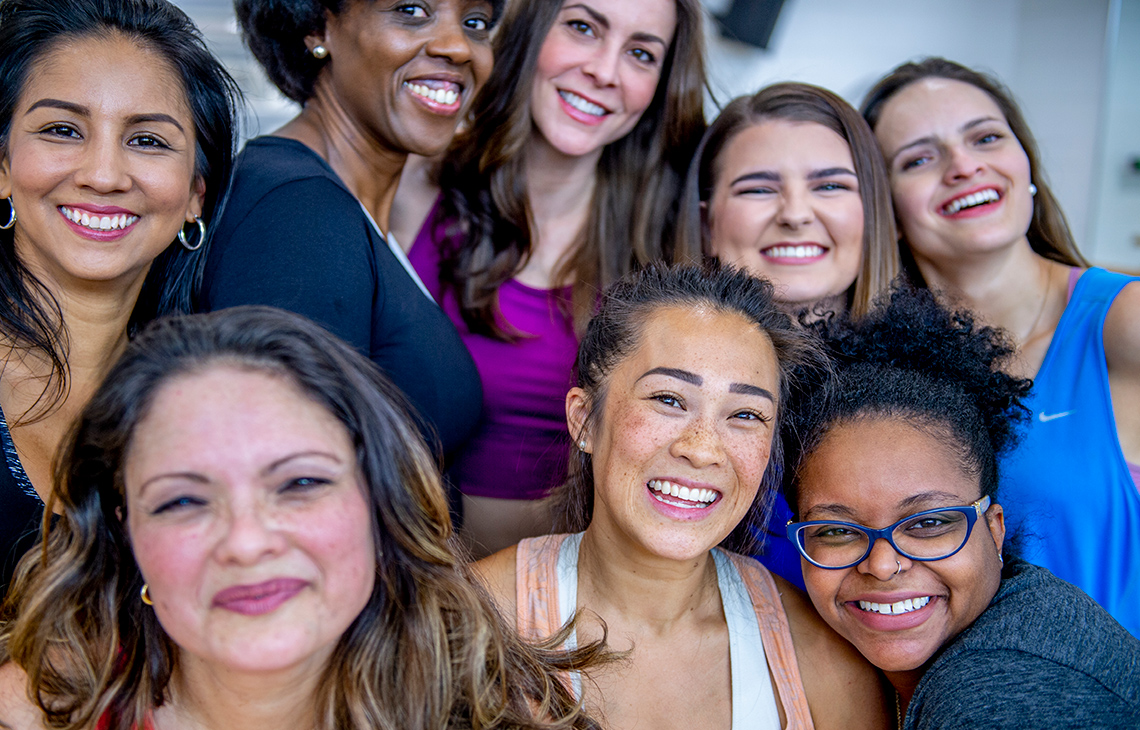
In this learning activity, you will be introduced to the important role that women had in Canadian society and history. Women are generally underrepresented in the documentation of Canadian history even though so many amazing women shaped Canada as we know it today.
Brainstorm a list of famous or influential women that you have heard of. Record their names using a method of your choice. Why do you think women are sometimes underrepresented in history?
Task 2: Who are they?
Explore the following series of Heritage Minutes videos. As you are exploring, make note of who is featured in the videos and why they are influential.
Press each of the following names to learn more about each woman's contribution to society.
Action
Task 1: Rights & suffrage
Before we begin, let's explore some important definitions.
- Equality is a condition in which all people are treated the same way, regardless of individual differences (inequality is the opposite, when people are not treated equally).
- A suffragist is a person who campaigns for the extension of the right to vote (suffrage) and a member of the suffrage movement, particularly the women’s suffrage movement.
Women have played a crucial role in the story of the past and how it shapes present-day Canada. Women's history on this land begins with Indigenous women. Over the centuries, immigrants from around the world have arrived, finding home, and shaping the land that would become Canada. Women from every corner of the world now share a part in creating Canada's history.
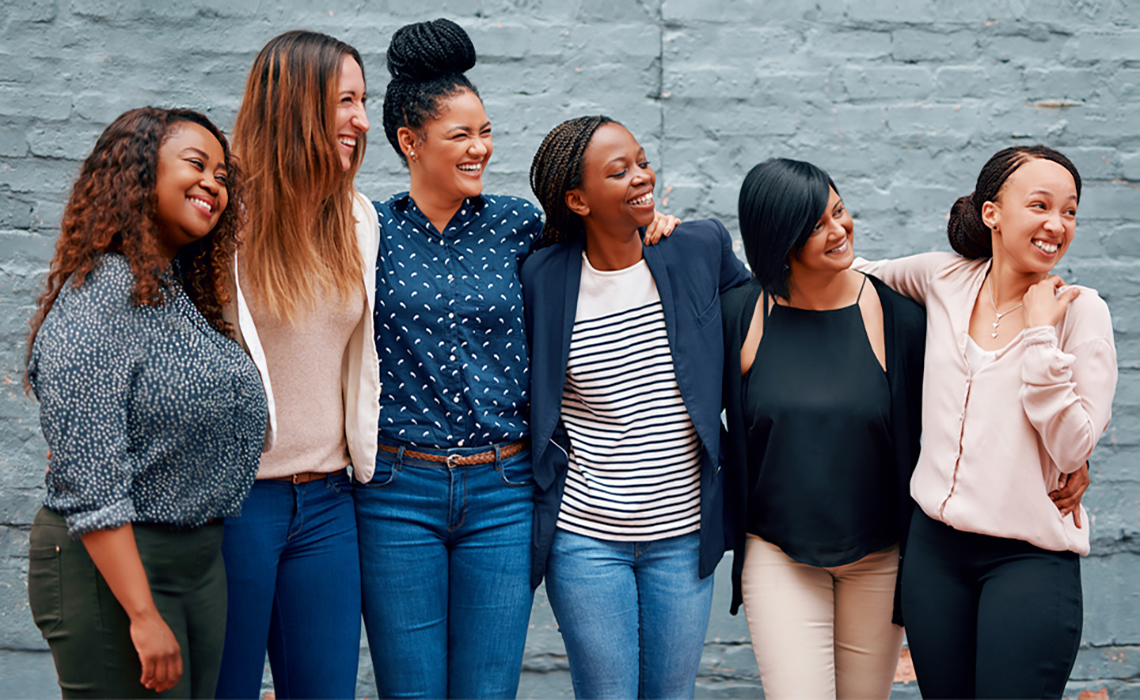
Working women
Women in Canada have always worked, performing different roles in a variety of places. Initially, women were expected to raise children and perform domestic labour, even as paid work became more available.
As jobs became available to women, they often offered little independence and were typically low-paying and exploitative.
Investigate one of the following primary sources and respond to the analysis questions.
Press 'Primary Source' to access what a primary source is.
Press the following titles to access more details about women's work in Canada over the years.
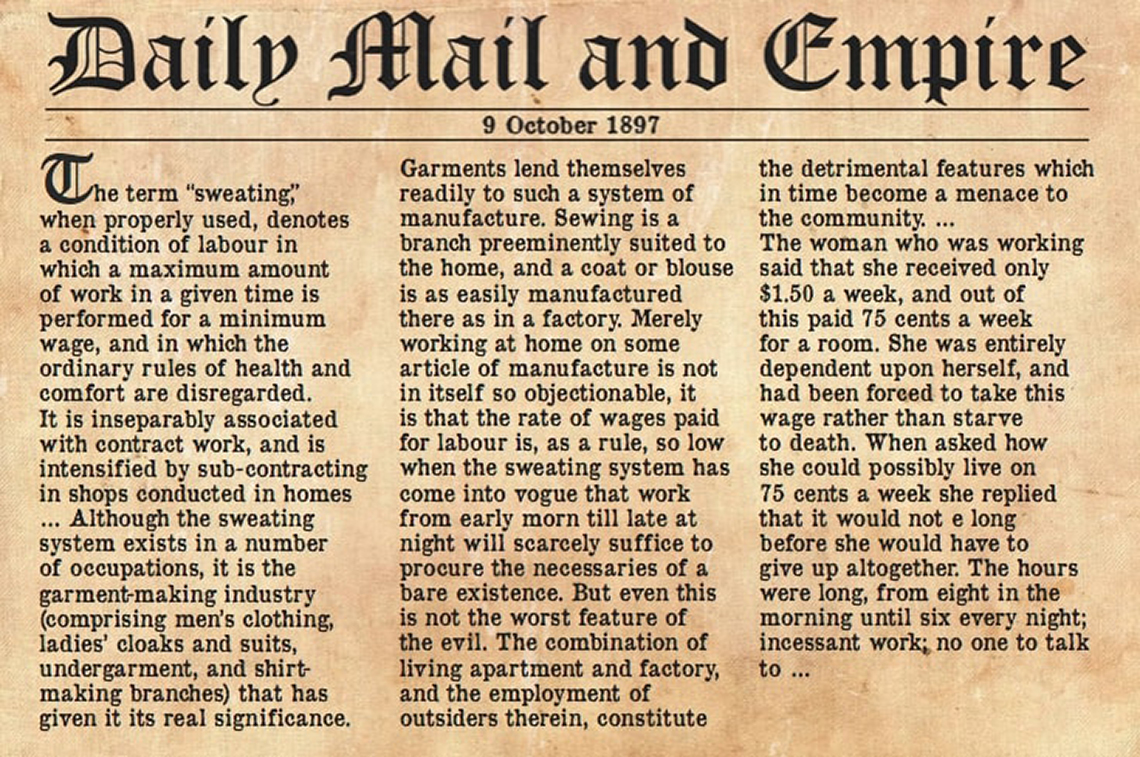 Description
Description
Daily Mail and Empire
9 October 1897
The term "sweating," when properly used, denotes a condition of labour in which a maximum amount of work in a given time is performed for a minimum wage, and in which the ordinary rules of health and comfort are disregarded. It is inseparably associated with contract work, and is intensified by sub-contracting in shops conducted in homes…
Although the sweating system exists in a number of occupations, it is the garment-making industry (comprising men's clothing, ladies cloaks and suits, undergarment, and shirt-making branches) that has given it its real significance.
Garments lend themselves readily to such a system of manufacture. Sewing is a branch preeminently suited to the home, and a coat or blouse is as easily manufactured there as in a factory. Merely working at home on some article of manufacture is not in itself objectionable, it is that the rate of wages paid for labour is, as a rule, so low when the sweating system has come into vogue that work from early morn till late at night will scarcely suffice to procure the necessaries of a bare existence. But even this is not the worst feature of the evil. The combination of living apartment and factory, and the employment of outsiders therein, constitute the detrimental features which in time become a menace to the community…
The woman who was working said that she received only $1.50 a week, and out of this paid 75 cents a week for a room. She was entirely dependent upon herself, and had been forced to take this wage rather than starve to death. When asked how she could possibly live on 75 cents a week she replied that it would not be long before she would have to give up altogether. The hours were long, from eight in the morning until six every night; incessant work: no one to talk to…
By Mr. Boivin:
Q- What is your occupation?
A- I am a weaver in the Stormont Cotton Mill.
Q- How long have you worked in that mill?
A- The most of four years.
Q- What are your wages there?
A- I get about $1 a day now.
Q- Are there any children working there?
A- Not in the room I am in.
Q- Is your work constant?
A- Yes.
Q- Do you see any employee there having too much work to do?
A- I think we all have too much work, once in a while.
Q- Do you work by the piece?
A- Yes.
Q- And you take a little rest when working by the piece—you do not object to take a little rest when working by the piece?
A- Yes; but if we do not do the work we do not get the money, that is all.
By Mr. Heakes:
Q- I suppose prices are not so good that you can afford to take a rest?
A- No; it is only $1 a day.
Q- Do you get as much now as before the strike?
A- Well, I have got back again now.
Q- Is it true that the length of the cut has been increased?
A- Not that I know of.
Q- Is everything satisfactory in the room where you are now?
A- Everything that I know of.
Q- Is the treatment of the hands fairly good?
A- Well, he always used me well.
Reflect
After exploring your primary source document, respond to the following analysis questions:

- What is the document about? What kind of work is involved?
- What questions about women working might this document help answer?
- What information from the document stands out to you?
- Do you think the idea of women being at home and taking care of children and men going to work is the norm that still exists today?
The right to vote
Explore the following timeline. This timeline outlines how women’s suffrage changed over time.
Press each of the titles on the timeline to access more information about the changes to women's suffrage.
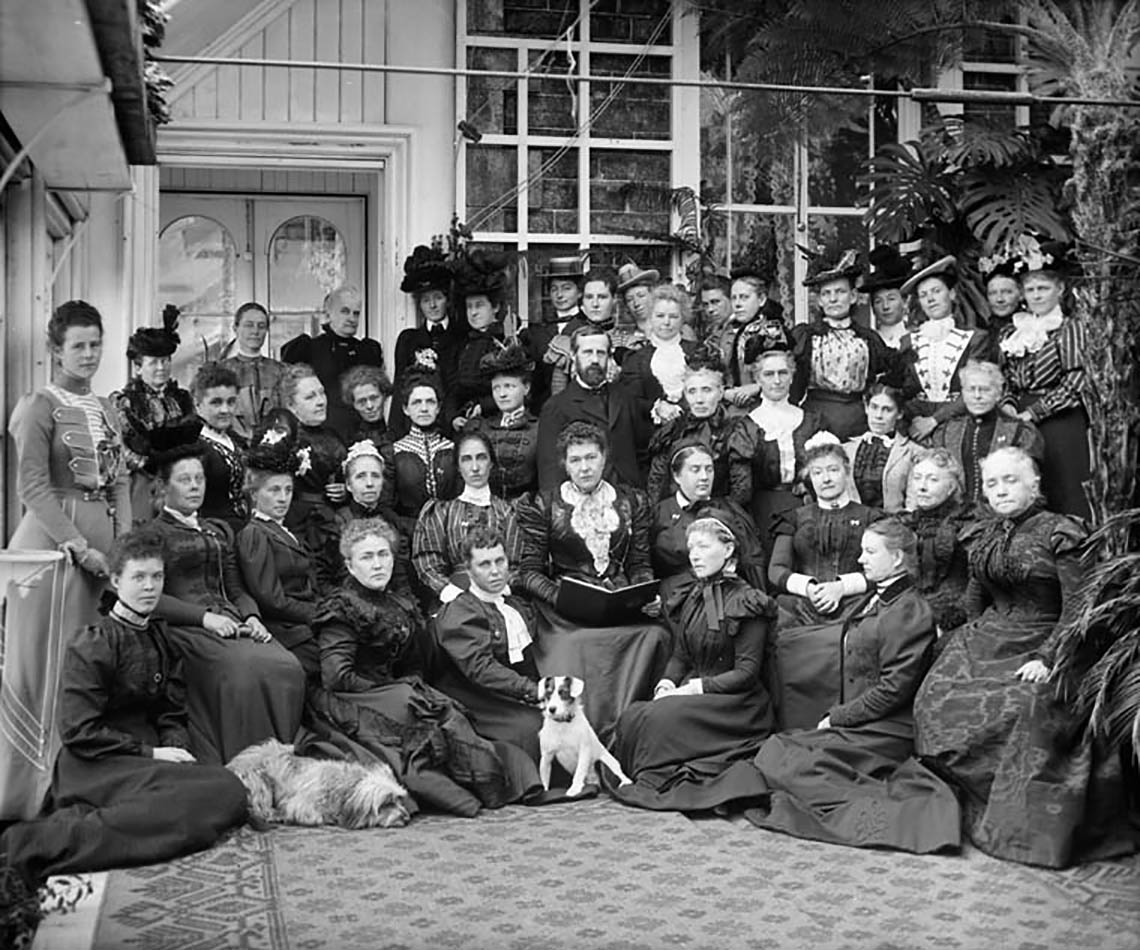
A black and white photograph of the National Council of Women at Rideau Hall in Ottawa, Ontario in 1898.
- Before 1851, women were excluded from all legislative elections in British North America (now Canada).
- In 1853, Black Abolitionist Mary Ann Shadd Cary edits a newspaper called Provincial Freeman, which links the anti-slavery and women’s rights campaigns. She reminds readers that gender and racial equality are both fundamental human rights.
- In 1876, Dr. Emily Stowe founded the first Women’s Suffrage Organization in Canada and fights for women’s rights, including access to higher education and the right to vote.
- In 1885, John A. Macdonald proposes expanding the right to vote beyond "all person’s male" to allow widowed women and women who own property the right to vote, but he is met with opposition.
- In 1885, the vote for women is first proposed in the Ontario legislature.
- In 1886, Knights of Labour (a labour federation) urge for equal citizenship for men and women and suggests that denying women the right to vote was "stupid and unreasonable."
- From 1892 to 1897, the Women’s Christian Temperance Union and Halifax Local Council of Women lead the Nova Scotia suffrage case and organize 34 petitions to be signed.
Source: Strong-Boag, 2016
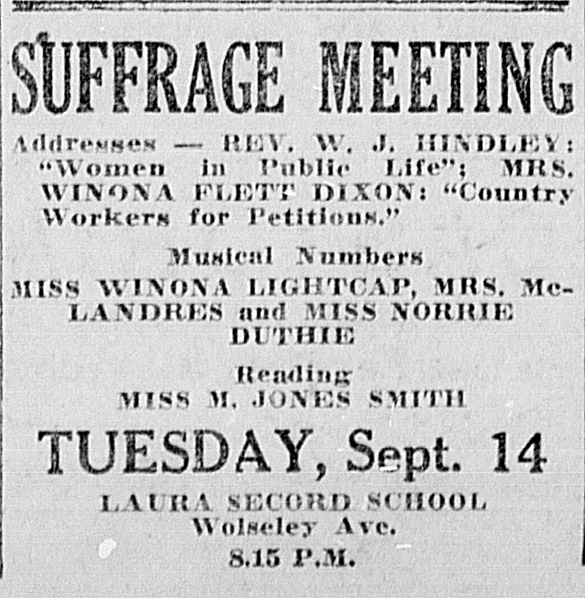
A black and white image of the newspaper The Winnipeg Evening Tribune that reads “Suffrage Meeting” at the top.
- In 1902, Margaret Hail is the first woman to run for the Ontario wing of the Canadian Socialist League, a campaign for cooperation, education, and political change
- In 1905, Henrietta Edwards requests "advanced legislation regarding women’s rights in property, a measure of women’s suffrage, and the recognition of a mother’s paternal rights."
- In 1909, the International Council of Women holds a meeting in Toronto and resolve in favour of women’s suffrage in every country with a representative government.
- In 1909, Toronto World (a newspaper) urges Ontario to be the first province to actively support women’s suffrage.
Source: Strong-Boag, 2016
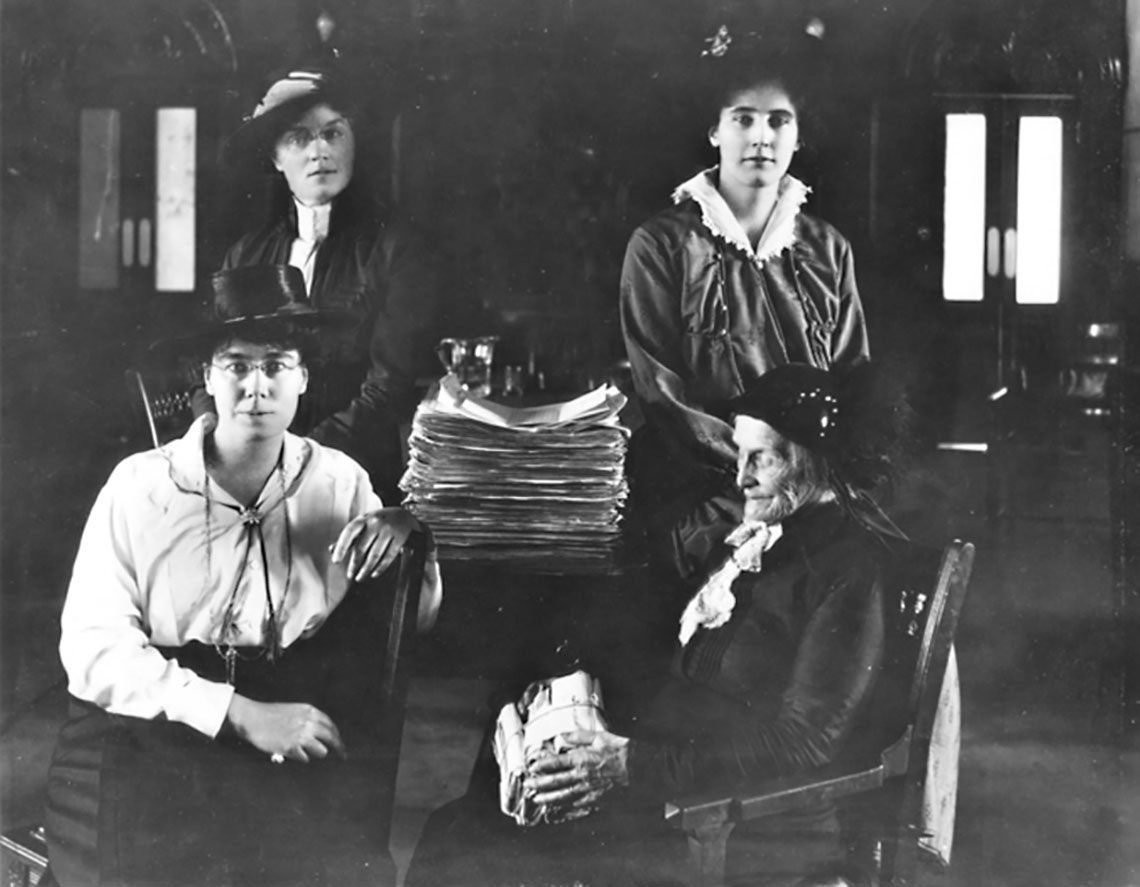
A black and white photograph of four women in the Political Equality League as they present a petition.
- In 1911, hundreds of suffragists meet with conservative premier James Whitney to listen to requests for the right to vote, but he remains opposed to the idea.
- In 1912, The Champion is British Columbia’s first suffrage monthly magazine with the motto “The Woman’s Cause Is Man’s.”
- At the end of 1912, Canadian suffragists join a march in Washington, D.C. with over 5,000 marchers. Men stand along the sides and harass the women.
- In 1914, Manitoba suffragists appear before the legislative assembly, where Nellie McClung insists on women’s right to vote. The premier responds with “most women don’t want to vote.” Nellie McClung holds an event to make women’s suffrage more publicly acceptable.
- In 1915, the Political Equality League gets 40,000 signatures on a petition that states there is no reason to keep women from voting.
- In 1916, women in Manitoba, Saskatchewan, and Alberta get the right to vote!
- In 1917, women in British Columbia and Ontario get the right to vote!
- In 1918, Nova Scotia women get the right to vote!
- In 1919, women in New Brunswick and Yukon get the right to vote!
Source: Strong-Boag, 2016

This is a black and white image of a newspaper article from 1930. The title reads, "Now That We Are Persons."
- In 1922, Quebec Liberal Premier Taschereau states that women will not get the provincial vote as long as he’s in office. Suffragist leaders emerge in Quebec to confront him.
- In 1922, women in Prince Edward Island get the right to vote!
- In 1925, women in Newfoundland and Labrador get the right to vote!
- In 1929, the Persons Case is pursued by The Famous Five, arguing that all women are legally “persons” and can hold seats in the Canadian government.
Source: Strong-Boag, 2016
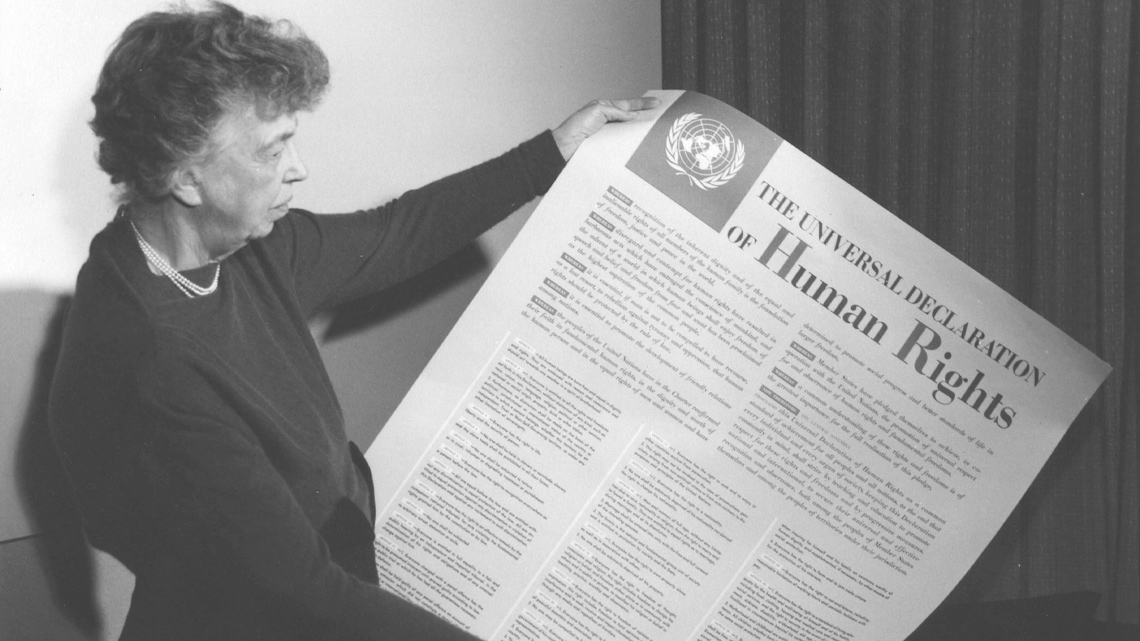
A black and white photograph taken in 1949 of Eleanor Roosevelt, holding the Universal Declaration of Human Rights.
- In 1934, the Dominion Franchise Act disqualifies Inuit and Status Indians from voting in federal elections.
- In 1940, women in Quebec get the right to vote!
- In 1947, the Citizenship Act extends the right to vote federally and provincially to Chinese-Canadian and South Asian-Canadian men and women, but still excludes Indigenous peoples and Japanese Canadians.
- In 1948, the Universal Declaration of Human Rights is issued and defines that elections “shall be by universal and equal suffrage.” The Elections Act is revised and removes race as grounds for exclusion from voting.
- In 1951, women in Northwest Territories gain the right to vote!
- In 1960, Indigenous Canadians were granted the right to vote, finally, in elections that concerned land that was stolen from them.
Source: Strong-Boag, 2016
Extend your learning
Choose one of the key moments from the timeline to independently explore further. Why is this moment so significant in the fight for women’s suffrage?
- Establishment of Women’s Suffrage Organization
- Women’s Christian Temperance Union
- The Champion (first woman’s suffrage monthly magazine)
- Suffragists march in Washington, D.C.
- Political Equality Petition
- Famous Five / Persons Case
Reflect

- What role did newspapers and magazines play in supporting and advancing the campaign for women’s suffrage? Do you think media is significant force for change today?
- Many Canadian women won the right to vote in 1918, but it wasn’t until the 1960's before all people in Canada obtained the right to vote, including Indigenous peoples. Why do you think this is?
Press 'Answer' to access responses that you might have thought of.
- Newspapers and magazines played a large role in supporting and advancing women’s suffrage. Several articles were published, and magazines were established that showed support for women’s suffrage, which also spread information about it. These articles were helpful in women gaining further public support. Media plays a significant force for change today. We often gain information about events and news from media as a way to inform people around the world of issues that may be ongoing. For example, Black Lives Matter protests were largely spread throughout media, enhancing support for the movement and enacting change.
- Answers may vary as this is an opinion question. It is possible that different provinces and peoples gained the right to vote at different times because there were various governments (prime ministers and premiers) throughout this time period who had different views about women, Indigenous peoples, and their rights.
Task 2: Women with influential contributions
Matching activity
Match the name of the woman to their influential and significant contribution to Canada. You may need to conduct some research to help you complete the matching activity.
Multiple choice activity
Answer the following questions about important Canadian women. You may need to conduct some research to help you complete the multiple choice activity.
For each name, select the description that best fits this person.
Task 3: Create
Student Success
Think-Pair-Share
Choose one of the influential Canadian women that you have explored in the previous task to conduct in-depth research on. Following the inquiry process in the checklist provided, create a presentation in one of the following formats listed. Be sure to include relevant details from your Influential Woman graphic organizer and images. If possible, share your presentation with a partner.
Checklist:
The format options that you can choose from
- written biography
- Facebook profile
- website
- slideshow presentation
- Heritage Minute
| Name of Person | |
| Background / Life Growing Up | |
| Education or Professional Experience | |
| Challenges or Setbacks | |
| Major Accomplishments or Achievements | |
| Reason for historical significance | |
| Other Interesting Facts |
Complete the following fillable and printable An Influential Woman graphic organizer. You can also complete this activity in your notebook or using another method of your choice.
Press the 'Activity' button to access An Influential Woman
Note to teachers: See your teacher guide for collaboration tools, ideas and suggestions.
Consolidation
Task 1: Then versus now

Throughout this learning activity, you have explored how women have advanced their rights and suffrage since the 1850s. A lot has changed, but there is still work to do.
Create a chart that compares the similarities and differences from the 1850s and today. What is similar and what has changed?
| Similarities | Differences |
Complete the Similarities and Differences activity in your notebook, in the following fillable and printable document, or in a method of your choice.
Press the 'Activity' button to access Similarities and Differences.
Task 2: Now what?
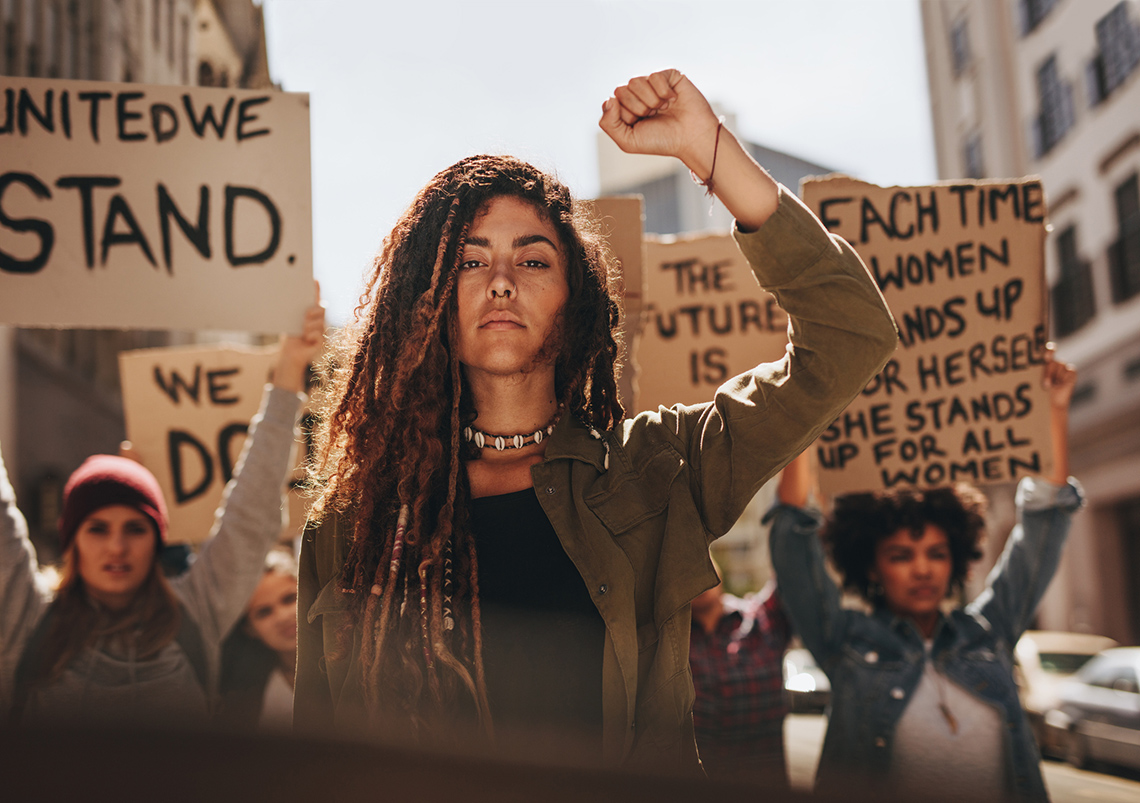
If anything defined the past decade in women’s rights, though, it was anger. Righteous, fed-up, change-making anger. Many people decided enough; many decided to act — some of them for the first time. This furious desire for change has set the stage for another 10 years of progress, if we want. If we can.
Source: McKeon, 2020
Gender inequality still very much exists today. So, how can you help?
Create a slogan or hashtag that supports gender equality and equal rights for women. Share your slogan or hashtag within your classroom, school, and community. You may wish to create an image or poster to accompany your slogan or hashtag.
Press ‘Example’ to access possible options.
Extend your thinking
Explore the entire article "How to Build on a Decade of Women’s Rage" by Lauren McKeon.
Press tvo today to access "How to Build on a Decade of Women’s Rage."
Opens in a new tabReflection
As you read the following descriptions, select the one that best describes your current understanding of the learning in this activity. Press the corresponding button once you have made your choice.
I feel...
Now, expand on your ideas by recording your thoughts using a voice recorder, speech-to-text, or writing tool.
When you review your notes on this learning activity later, reflect on whether you would select a different description based on your further review of the material in this learning activity.